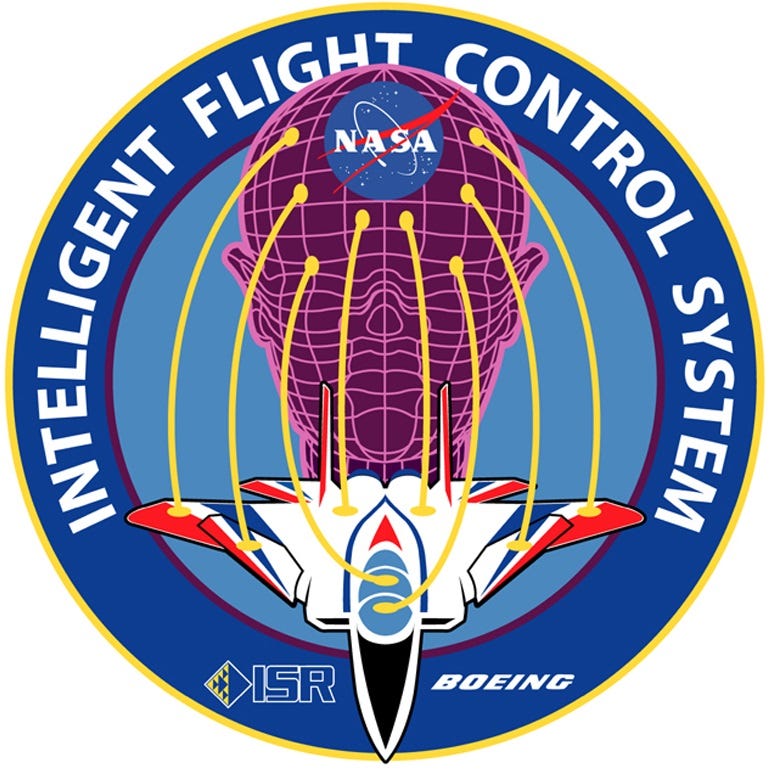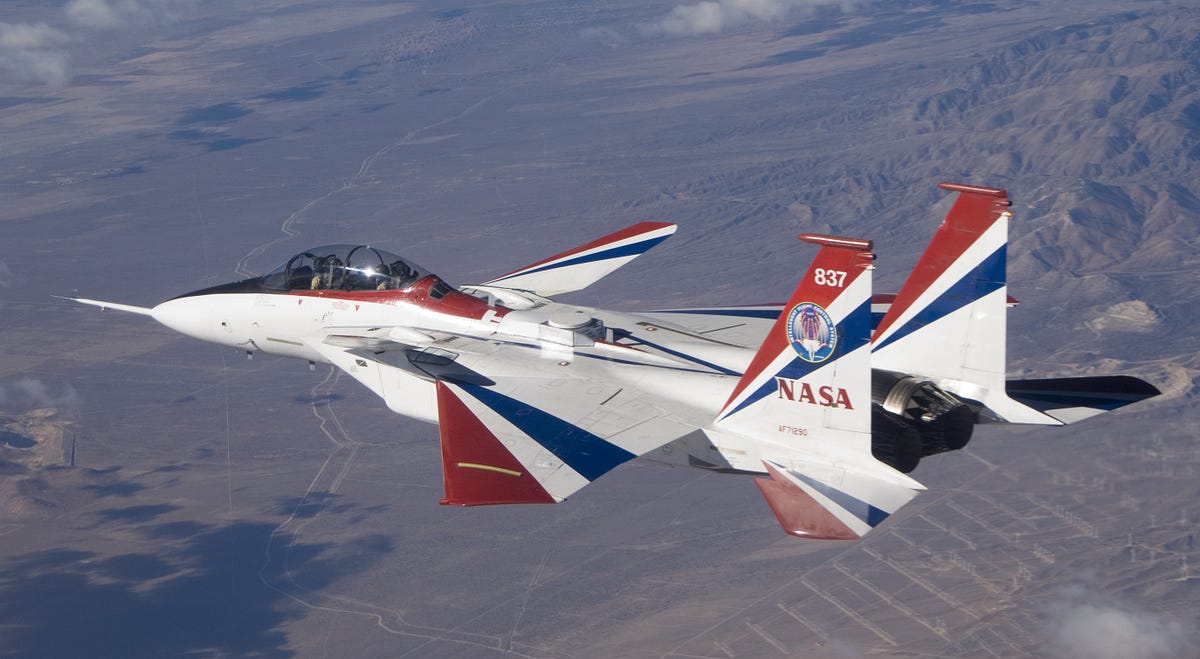At the beginning of this century, from 1999 to 2008, NASA Dryden Flight Research Center started a novel research program to investigate applications of Artificial Intelligence (AI) to reduce pilot’s workload after a flight controls failure.
With this research, NASA aimed to prove that the symbiosis between AI and state of the art control algorithms could render a self-healing control software.
The AI was intended to be a key element of the digital “fly-by-wire” system of the aircraft, providing real-time estimations of the aerodynamic derivatives of the aircraft, that were then used to redesign in real-time the flight control strategy. This control architecture was defined by NASA as the Intelligent Flight Control System (IFCS).

This logo represents NASA F-15 #837 demonstrating the use of neural networks through revolutionary control approaches that could efficiently optimize aircraft performance in normal and failure conditions. Credit Nasa. Logotype author David Faust
The IFCS was a very ambitious project which involved not only the Dryden Flight Research Center but also the NASA Ames Research Center, Boeing Phantom Works, the Institute for Scientific Research at West Virginia University, and the Georgia Institute of Technology.
**This is the story of NASA’s realization of a vision for safer and more capable AI-based flight control systems. **A story that nowadays is part of the embedded software of the most advanced 5th generation fighter aircraft, and maybe of new airliners expected for the 2030 horizon and beyond.
#artificial-intelligence #nasa #aviation #flight-controls
